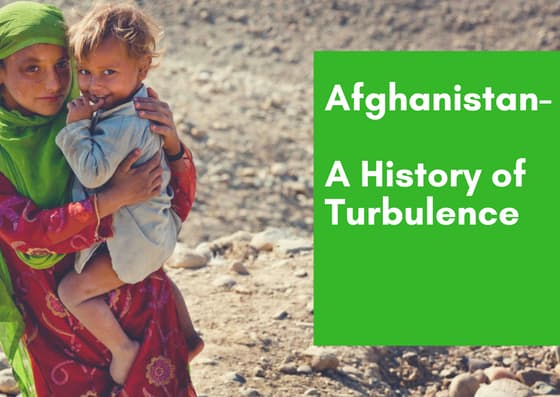Afghanistan – A History of Turbulence

Afghanistan (officially the Islamic Republic of Afghanistan) may not be high on everyone’s ‘must visit‘list because of its recent troubledpast. It is, however, a truly historic land which encompasses some breathtaking mountain scenery, beautiful lakes and a wealth of bird and animal life. The majority of its people still live simple lives close to nature and the seasons. Its natural resources have provided its people’s livelihood for centuries, whether farming, livestock grazing, huntingor building with the abundant local stone.
Where Exactly Is It?
Afghanistan is alandlocked mountainous country, with plains in the north and southwest. It straddles Central and South Asia and shares borders with Pakistan, Iran, Turkmenistan, Uzbekistan, Tajikistan and China. Its area is approximately 652,000 square kilometers which makes it the 41st largest country in the world. With a 32-million person population, it holds a similar positionin the list of the most populous countries (in fact it is 41st). Its capital city, Kabul has a population of about three and a half million people.
An Archaeologist’s Dream
Diggings at some of the archaeological sites in Afghanistan suggest that humans were living in the area at least 50,000 years ago and that farming communities there were amongst the earliest anywhere. Many historians believe that Afghanistan is comparable to Egypt in terms of the importance of its archaeological sites.
A Strategic Crossroads
The country’s checkered history has in fact been molded by its position. It sits in a unique area where numerous civilizations have interacted and often fought. Its strategic location along the ‘Silk Road’ fostered early connections to Europe, the Middle East and other parts of Asia.
The land which is now called Afghanistan has been home to various civilizations throughout the ages including the ancient Iranian people from whom the dominant Indo-Iranian languages originated. At different points in history the land has been incorporated in a wealth of large regional empires and kingdoms and witnessed many military campaigns notably by Alexander the Great, Muslim Arabs, the Mongols, the British and the Soviet Russians.
Recent Times
The recent political history of the modern state of Afghanistan stems from the time in the late 19th century when it became a buffer state in the “Great Game” between British India and the Russian Empire. After the Third Anglo-Afghan War in 1926, it was established as a constitutional monarchy under King Amanullah Khan. In 1933 the crown was inherited by King Mohammed Zahir Shah and he reigned for 39 years. During his reign the kingdom joined the League of Nations (1934) and remained neutral and pursued a diplomatic policy of non-alignment during the World War II.
King Zahir Khan was overthrown by his cousin Mohammed Daoud Khan in 1972. Daoud Khan successfully established a republican Afghan Government and became its first president.
Communist Influence
There was more turbulence ahead,however,when Daoud Khan’s centrist government was overthrown by left wing military officers in April 1978. The leader was Nur Mohammed Taraki and power was shared by two Marxist-Leninist political groups which forged close links with the Soviet Union. The new government had little popular support and organized ruthless purges against opponents. They also instigated unpopular land and social reforms which were bitterly resented by the devoutly Muslim and mainly anti-communist population. Armed resistance to the government arose from different Islamic tribal and urban groups – collectively known as the mujahideen (those who engage in jihad).
These insurgencies directly led to the Soviet invasion of Afghanistan in late December 1979 with the purpose of supporting the Communist government. Soviet troops remained in the country until February 1989. The withdrawal did not herald the longed for peace however, and more conflict was to besmirch the troubled republic.
